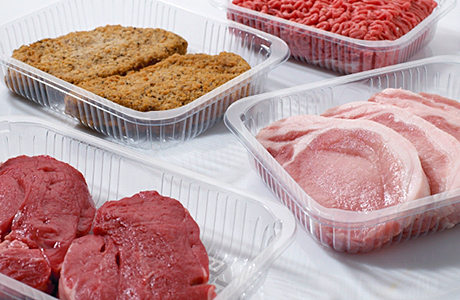Late July saw three of the UK’s leading supermarkets launching investigations into their chicken supplies after a national newspaper uncovered a catalogue of alleged hygiene failings within the poultry industry. Is it time to turn to antimicrobial packaging? LINPAC Packaging sets the scene and discusses its own ‘bug-busting’ solution to protect consumers.

UNDERCOVER footage, photographic evidence and information from whistleblowers gathered by The Guardian newspaper appeared to reveal how strict industry hygiene standards to prevent the contamination of chicken with the potentially deadly campylobacter bug can be flouted on the factory floor and on farms.
The poultry processing plants involved have denied the claims and a Food Standards Agency review of the evidence has found “no risk to public health.”
But the investigation prompted Tesco, Sainsbury’s and Marks & Spencer to launch emergency investigations into their chicken sources in late July.
Two-thirds of shop-bought chicken is contaminated with campylobacter, according to the Food Standards Agency. Even when a flock is identified as having the bacteria, the birds can still be sold for human consumption on the grounds that, properly handled and properly cooked, they present no risk to human health.
Campylobacter is an increasing concern for the entire supply chain and preventing cross-contamination during preparation, processing, packing and distribution is seen as a key strategy in reducing the risk to consumers.
Food packaging company LINPAC Packaging and Addmaster, a supplier of performance additives to industry, have developed a technically-advanced range of trays and lidding films with built-in antimicrobial technology to reduce bacteria growth on the outer packaging of fresh meat.
SILVER-BASED ADDITIVE
Addmaster’s Biomaster antimicrobial technology is a silver-based additive that can be added into any plastic, paper, textile, paint or coating product. Treated products have been proven to reduce the growth of campylobacter on their surface by up to 99.99%.
Alan Davey, Director of Innovation at LINPAC Packaging, said: “While the correct handling and preparation of food by consumers at home prevents contamination, our work with Addmaster is addressing concerns raised by our customers and is helping them to reduce the chances of bacterial growth on the outer packaging of fresh meat products in the stages between farm and fork.
“Addmaster and LINPAC Packaging are committed to helping its customers deliver safer food products by bringing together innovation and technology to develop high quality packaging solutions.”
The additives are cost-effective and crucially do not affect product functionality or the food’s organoleptic properties like taste and smell.












